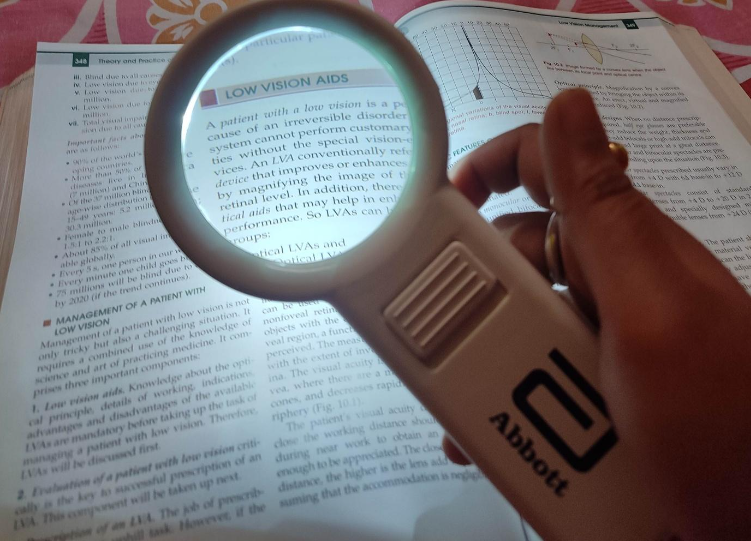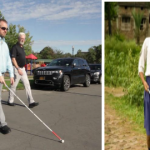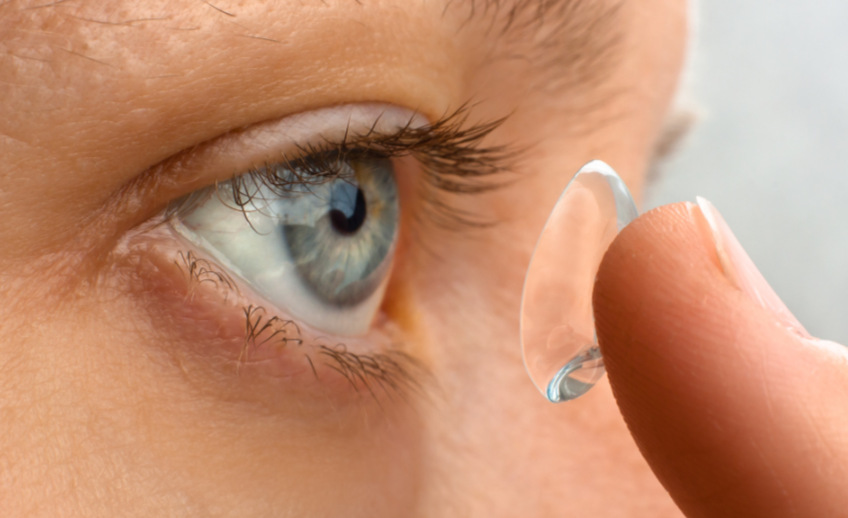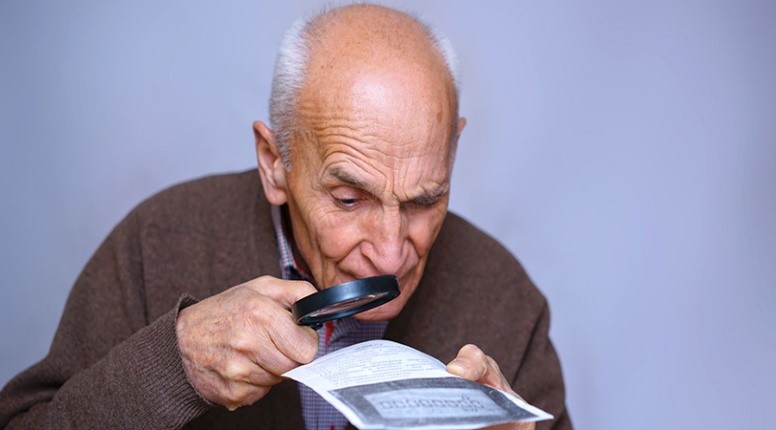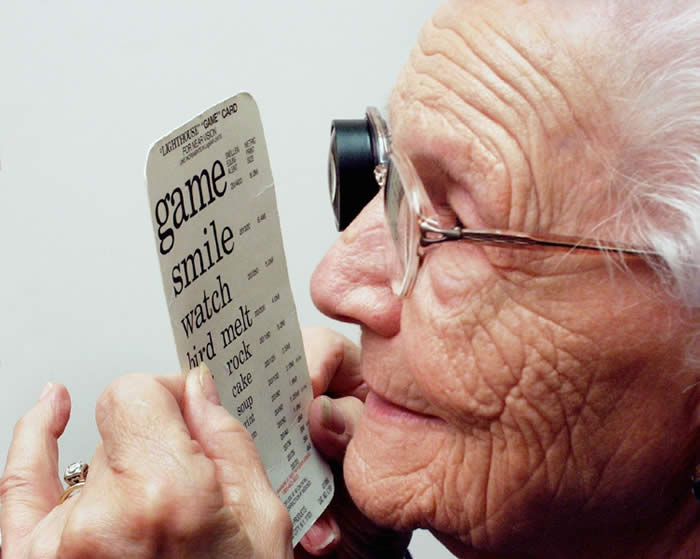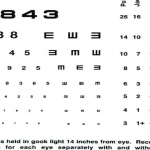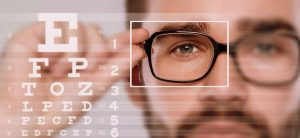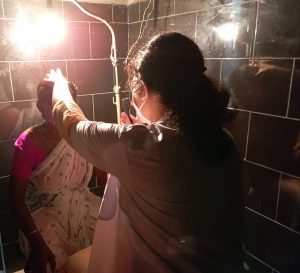There are many low vision devices to help with daily activities. Talk with your vision rehabilitation team about solutions for your specific needs. Also ask if you will need training in how to use any devices that are recommended.
Optical Low Vision Aids
Optical aids use magnifying lenses to make objects look larger and easier to see.
Correctly refracted glasses.The child needs a proper cycloplegic refraction (with eye drops), and measurement of accommodation (ability to see close up when reading or playing). Children with low vision may benefit from glasses earlier and at lower or more specialized prescriptions than a child with vision that’s developing more typically.
Magnifying spectacles. Magnifying spectacles are worn like eyeglasses to keep your hands free. They can be used for reading, threading a needle or doing other close-up tasks. Often objects need to be held much closer with these magnifying glasses than with regular reading glasses or bifocals.
Stand magnifiers. These magnifiers rest above the object you are looking at. This helps to keep the magnifying lens at a proper distance. Being on a stand also is helpful to people who have a tremor or arthritis. Some stand magnifiers have built-in lights.
Hand-held magnifiers. These are magnifiers to hold over print material. Some models have built-in lights.
Telescopes. These are used to see objects or signs far away. Some telescopes can be attached to eyeglasses. Others are held like binoculars.
Non-Optical Devices
- Watches, timers and devices with audible announcements to measure blood pressure or blood glucose.
- Large-print books, newspapers, magazines, playing cards and bank checks
- Audible books
- Telephones, thermostats, watches and remote controls with large-sized numbers and high-contrast colors
- Needle threaders, magnifying mirrors and tactile (textured) labels
Electronic Devices
Video magnifiers. These electronic devices are available in portable and desk formats. They combine a camera and a screen to magnify printed pages, pictures or other small objects. You can adjust them to meet your special vision needs. For instance, you can add contrast to make printed words darker. Some video magnifiers can read text aloud. There are many new video magnifiers. The vision rehabilitation team will be knowledgeable about current technology and what can be provided at home or in the classroom.
Audio books and electronic books. With audio books, you can listen to text that is read aloud. With electronic books like Kindle, Nook and others, you can increase word size and contrast.
Smartphones and tablets let you change text size, adjust contrast and use voice commands. There also are many apps to choose from, such as programs that read material aloud, magnify or illuminate.
Computers can usually read aloud or magnify what is on the screen. When a large screen TV is used as the computer monitor via an HDMI cable, the display is enlarged greatly.
New advances in consumer technology are not a cure-all for those with low vision. Many people will need other devices and aids as well. They will also need vision rehabilitation to achieve their best possible use of vision. But for many people, these digital devices and apps are portable, lower-cost options for low vision aids.
Old Equipment
Instead of disposing or recycling your low vision device, consider donating it to a vision rehabilitation center, non-profit organization, support group, public library, or a retirement facility. Many devices can be refurbished or donated to humanitarian organizations that provide eye care in the developing world.
Conclusion:
As an optometrist, it’s very important to be aware of the various types of assistive technology along with their uses for low-vision people. Similarly, to take a session for orientation and mobility based on the patient’s demand is as valuable as knowing all devices. Guide a visually impaired patient in all possible ways is one of the major concerns for every low vision expert. It is also necessary to look for low-cost devices with limited sources in India.

